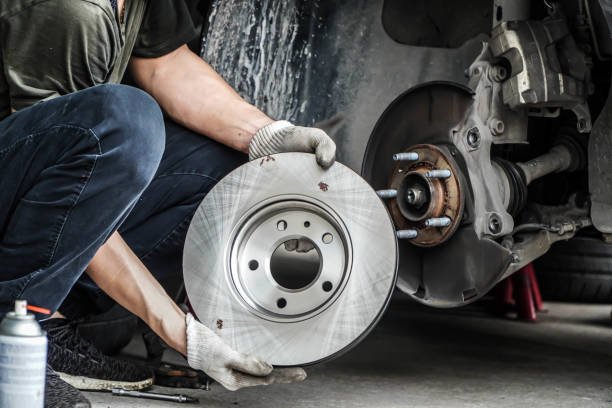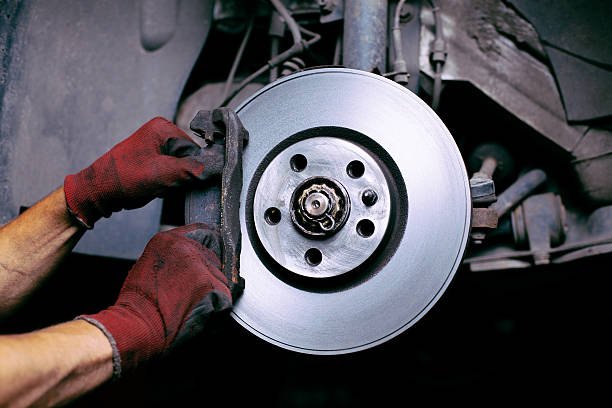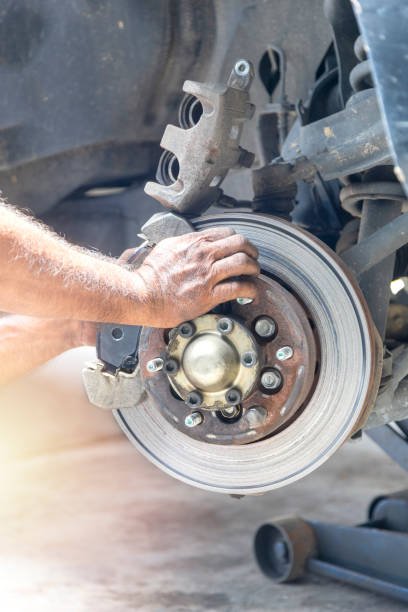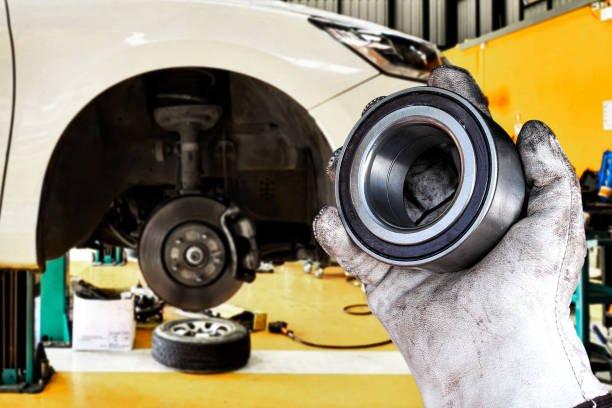Myth #1: OEM Means Overpriced
Let’s bust a big myth that’s been floating around garages, forums, and coffee shops for way too long:
“OEM parts are always overpriced.”
You’ve probably heard someone say it—maybe even believed it yourself. But before you run to grab a “budget” replacement, let’s take a closer look. Because when it comes to cars, cheap doesn’t always mean smart—and OEM doesn’t always mean expensive.
Why OEM Isn’t the Rip-Off People Think It Is
OEM stands for Original Equipment Manufacturer—and that’s not just a fancy name to slap a higher price tag on a part.
When you buy an OEM part, you’re paying for exact fit, proven performance, and long-term reliability. These parts are designed by the same engineers who built your car, and they’ve been tested to make sure everything works just right.
So yes, OEM might cost a little more upfront, but you’re not just buying a part—you’re buying peace of mind, fewer breakdowns, and no surprise fits. In the long run, you’re saving money by avoiding repeat repairs and replacement parts that don’t last.
And here’s a fun fact: sometimes, aftermarket parts can actually cost more—especially when they require extra tools, adjustments, or returns because they didn’t fit right.
You Get What You Pay For—Especially With Car Parts
Let’s break it down with a real-world example. Imagine you need a new side mirror.
An OEM mirror might cost $150. You find an aftermarket one online for $90. Score, right?
But once it arrives, it doesn’t quite fit. It wobbles. The paint is off. The wiring doesn’t match.
You pay another $40 to return it, then another $150 to get the correct one installed anyway.
So now you’ve spent more than the OEM price—plus time, effort, and frustration. That “cheap” mirror ended up costing more than the real deal.
It’s like buying discount batteries that last a week. You end up replacing them more often and spending more in the long run.
OEM parts are built to last, which means fewer repairs, less downtime, and more money saved over the life of your car.

Warranty Coverage Adds Extra Value
Here’s something that makes OEM parts even more worth it: they usually come with a warranty.
That means if the part fails due to a defect, you’re covered. No fuss, no drama, no digging through receipts.
Aftermarket parts? Many don’t come with a warranty at all—or only offer a super limited one that doesn’t cover much.
Plus, using OEM parts helps protect your car’s warranty as a whole. If your engine has a problem and the manufacturer sees you installed an off-brand part, they might refuse to cover the repair.
So not only do OEM parts reduce your repair risks, they help you avoid massive out-of-pocket costs if something major goes wrong.
You might not see that benefit immediately, but your wallet definitely will in the long run.
The Price Gap Isn’t As Big As You Think
This part might surprise you: in many cases, OEM parts aren’t that much more expensive than their aftermarket versions.
Sometimes it’s a difference of just $10 or $20, which is a small price to pay for guaranteed quality and fit.
And here’s a pro tip: if you shop around at authorized online sellers, you can often find OEM parts at competitive prices—even cheaper than some high-end aftermarket parts.
Just make sure you’re buying from trusted sources (not random sellers with usernames like “AutoPartz4U123”).
OEM doesn’t mean luxury—it means precision, protection, and performance. And when you add up the long-term savings and reduced risks, it often turns out to be the smarter financial choice.
In Conclusion: Don’t Let the Myth Fool You
Saying “OEM is overpriced” is like saying healthy food is always expensive. Sure, it might cost a bit more at first—but the benefits are real, and it often saves you money later.
When it comes to your vehicle, OEM parts offer value in fit, function, and future savings. They help protect your car, your warranty, and your peace of mind.
So the next time someone tells you OEM is a rip-off, you can smile and say,
“Nope, it’s actually the best deal on the road.”
Are Aftermarket Parts Just as Good?
It’s the question every car owner eventually asks—“Are aftermarket parts just as good as OEM?” And the honest answer?
Sometimes yes, sometimes no—and sometimes “not even close.”
It really depends on the part, the brand, your car, and what you expect. Let’s dive into what makes some aftermarket parts worth a shot—and why others might leave you wishing you’d gone OEM instead.
Not All Aftermarket Parts Are Created Equal
Aftermarket parts are like mystery snacks. Some are surprisingly good, and others make you wonder what you just put in your mouth.
There are top-tier aftermarket brands that actually put serious effort into design and quality. Some even exceed OEM specs in performance areas like brakes, suspension, or cooling systems.
But then there are cheap knockoffs that barely fit, wear out fast, and sometimes make things worse. You know, the kind of parts that give mechanics headaches and drivers trust issues.
That’s the tricky thing with aftermarket parts—they cover a wide quality spectrum. You have to do your homework before clicking “Add to Cart.”

The Price Temptation Is Real (But Risky)
Let’s be real—aftermarket parts are popular because they’re usually cheaper. And who doesn’t love saving money?
If you’re replacing a cabin air filter, windshield wipers, or a basic hose, an affordable aftermarket option might work just fine.
In fact, many of these parts are easy to install, and the performance difference is barely noticeable.
But when you start replacing engine components, sensors, or electrical systems, those small differences can turn into big problems.
A few dollars saved upfront could mean extra labor, return trips, and even damage to other car parts.
Basically, it’s not a great deal if it breaks too soon or messes with your vehicle’s systems. Cheap today can mean costly tomorrow.
Fit and Finish: The OEM Advantage
One of the most common complaints with aftermarket parts? They don’t always fit quite right.
OEM parts are designed using the exact specs of your car model. That means they fit like a glove, no adjustments needed.
Aftermarket parts? They’re often built to fit “most cars,” which is code for “close enough, probably.”
That slight difference in shape or size can cause rattling, stress, or even failure over time.
And when it comes to things like body panels, headlights, or mirrors—aftermarket versions might look almost the same, but not quite.
You could end up with a mismatched paint job, uneven seams, or parts that wiggle when they shouldn’t.
Performance Isn’t Always Better (Despite the Hype)
Some aftermarket parts are marketed as “high-performance” upgrades, which sounds awesome—but doesn’t always translate into real-world benefits.
Sure, a sportier exhaust or custom intake might make your car sound cooler. But will it last? Is it reliable?
More importantly, does it work well with your vehicle’s existing systems?
Many aftermarket “performance” parts require additional tuning or modification. If you’re not careful, you could void your warranty or damage your engine.
That extra horsepower might come at the cost of stability, safety, or fuel economy.
So unless you’re building a track car or fully understand your upgrades, OEM is the safer, smarter option for everyday drivers.
When Aftermarket Makes Sense
Let’s give credit where it’s due—aftermarket isn’t always bad.
If you’re customizing your car, want a sportier look, or need a part that’s no longer available as OEM, aftermarket can help.
Some parts even offer better materials or improved durability in certain categories.
Just make sure you buy from reputable brands with good reviews. Look for certifications, warranties, and detailed product info—not just a low price and blurry photo.
And if your car is out of warranty, you might be more open to experimenting. That’s fine—as long as you know the risks and do your research.

In Conclusion: It Depends on the Part (and the Person)
So, are aftermarket parts just as good? The answer is… sometimes, but not always.
If you’re replacing a simple, non-critical component, a well-reviewed aftermarket part can be just fine—and cheaper too.
But for anything that impacts safety, reliability, or performance, OEM is usually the better bet.
Think of it this way: aftermarket parts are like off-brand cookies. Sometimes they’re delicious, and sometimes they crumble before you even open the pack.
When in doubt, go with what’s tested, trusted, and tailor-made for your car. That’s OEM. And your vehicle will thank you.
Does “Universal Fit” Actually Work?
You’re shopping for a car part online, and boom—you see the magic words: “Universal Fit.” It sounds amazing, right?
Like one-size-fits-all for car parts. No hassle. No measuring. Just grab it, slap it on, and go.
But let’s hit the brakes for a second—because “universal fit” doesn’t always mean a perfect fit.
In fact, sometimes it means “universal frustration.” So let’s dive into what universal parts really are, how they work, and when they might let you down.
What “Universal Fit” Really Means (Spoiler: Not That Universal)
Let’s be honest, “universal fit” is kind of like calling sweatpants “formal wear”—they’re comfy, but they’re not made for everything.
When a part says “universal fit,” it usually means it’s designed to work with lots of different vehicles, not just yours.
That sounds convenient, but cars are complicated, and there’s no such thing as a truly one-size-fits-all component.
Universal parts often require modification, extra parts, or adjustments to actually work correctly with your vehicle.
They might technically fit—but only after you bend, trim, twist, or pray a little. And sometimes, even that’s not enough.
You might end up spending more time and money trying to make it work than if you’d just bought the right part.
Close Enough Is Sometimes… Not Enough
Here’s the big problem: close enough doesn’t cut it when it comes to your car.
A “universal” exhaust tip that rattles? Annoying.
A “universal” seat cover that doesn’t stay put? Annoying.
A “universal” brake pad that doesn’t line up perfectly? Dangerous.
Many universal parts are designed to fit broadly, but your car wasn’t built broadly—it was built specifically. Every bolt, groove, and plug has a purpose.
If something doesn’t align just right, it can wear unevenly, fail early, or even cause damage to other parts.
So unless you love returning items or doing garage gymnastics, universal fit parts might not be the shortcut they seem.
When Universal Fit Actually Can Work
Now, let’s be fair—not all universal fit parts are bad.
Some parts really do work across many vehicles. For example:
- Floor mats
- Phone mounts
- Air fresheners
- Seat covers
These things don’t require perfect alignment or critical functions to do their job. If they’re a little off? No big deal.
Other parts, like LED light strips, license plate frames, or roof racks, can also work great as long as you read the fine print.
Just be sure they’re adjustable, installable, and don’t interfere with anything essential—like sensors, airbags, or visibility.
The trick is to know which parts are forgiving and which ones demand precision. Your floor mat doesn’t need a custom fit.
Your timing belt absolutely does.
Hidden Costs of Going “Universal”
Let’s talk about the thing nobody tells you: universal fit sometimes costs more in the end.
Sure, the part might be cheaper upfront. But once you add the time, tools, extra brackets, and trial-and-error installs?
Suddenly, you’re not saving money—you’re wasting it.
And if you end up returning the part (which is common), now you’re out of time and shipping fees.
You also run the risk of accidentally damaging the new part—or worse, damaging your car—during a forced fit attempt.
Sometimes, “universal” becomes “unusable.”
In Conclusion: Universal Isn’t Always Useful
So… does “universal fit” actually work? The answer is: sometimes—but don’t count on it.
If the part is non-essential, cosmetic, or designed to be adjustable—go for it. You might score a decent deal.
But if the part affects safety, engine performance, or how your car functions, universal fit probably isn’t the right fit.
OEM parts, or even vehicle-specific aftermarket parts, are worth the extra peace of mind. They fit right, work better, and save you the frustration.
Your car deserves more than a “maybe it’ll fit” part. It deserves the real deal.
So next time you’re shopping and see “universal fit,” just ask yourself:
“Do I want a quick fix—or the right fix?”
The Hidden Truth About Resale Value
So, you’re thinking about selling your car one day—but here’s the thing: resale value isn’t just about the mileage.
There’s a hidden layer most people forget about, and it could make the difference between a quick sale and lowball offers.
Spoiler alert: your choice of parts plays a huge role in what your car is worth later. And if you’ve been using knock-off components, you might be accidentally lowering your resale price—without even realizing it.
Let’s dive into what really affects resale value, and why OEM parts are your car’s secret savings account.
Maintenance History Tells the Full Story
When someone’s shopping for a used car, they want to know how well you took care of it.
That’s why having a detailed maintenance history is such a big deal. It’s like showing your car’s clean report card.
And guess what? If that report card shows OEM parts used during repairs, your car instantly looks more trustworthy.
Buyers (and dealerships) see OEM as a sign that you cared. You didn’t cheap out. You did things right.
It tells them you didn’t just get it fixed—you got it fixed correctly. That can boost your car’s value more than any fancy air freshener ever will.
Aftermarket Parts Can Scare Off Buyers
Here’s a little truth bomb: not everyone loves aftermarket parts.
Sure, some folks like performance upgrades or flashy accessories. But most buyers just want a car that’s reliable, unmodified, and ready to go.
When they hear things like “aftermarket suspension” or “non-OEM sensors,” they start to worry.
Will it need repairs sooner? Was it installed properly? Is it compatible with the rest of the car?
All these questions create doubt—and doubt means lower offers or lost sales.
OEM parts, on the other hand, are like name-brand confidence. Buyers know what they’re getting, and it makes the deal way smoother.

Dealership Trade-Ins Prefer OEM
Thinking of trading your car in? Dealerships love OEM parts—and they might pay more if your car is 100% factory-spec.
Why? Because they know OEM parts:
- Have consistent quality
- Don’t require adjustments
- Work well with original systems
- Keep warranty coverage clear
Cars with aftermarket modifications often need extra inspections. Sometimes, they’re even harder to resell, especially if the dealer has to undo the changes.
So if you want to get the most money possible at trade-in time, OEM is your golden ticket.
Even something small—like replacing a mirror or headlight—can make a difference.
Stick with OEM and let the dealership see you treated the car like a pro.
Resale Value Is More Than Looks
We all love a shiny car, but good resale value goes beyond clean paint and vacuumed carpets.
If the inside’s been Frankenstein-ed with mismatched parts and “universal fit” disasters, buyers will notice—and run.
Things like poor fit, weird sounds, or dashboard lights triggered by non-OEM electronics can raise serious red flags.
It might still drive, but it won’t sell like it should.
OEM parts keep things seamless and consistent. That means less explaining, fewer buyer questions, and faster sales at better prices.
Think of OEM as an Investment
Sure, OEM parts might cost a little more upfront. But over time, they add value back into your car.
You’re not just buying a part—you’re investing in your car’s future.
And when you finally decide to upgrade, that investment shows up in the form of higher resale or trade-in offers.
It’s like using premium ingredients in cooking. The meal tastes better, looks better, and impresses the guests—because you didn’t cut corners.
In Conclusion: Resale Value Lives in the Details
Your car’s resale value isn’t just about age or mileage—it’s about how well you cared for it along the way.
Using OEM parts tells a better story. It shows pride, responsibility, and attention to detail.
So next time you’re faced with a choice between OEM and aftermarket, ask yourself this:
“Do I want a slightly cheaper part now—or a much higher sale price later?”
The hidden truth? OEM wins both in the garage and at re


